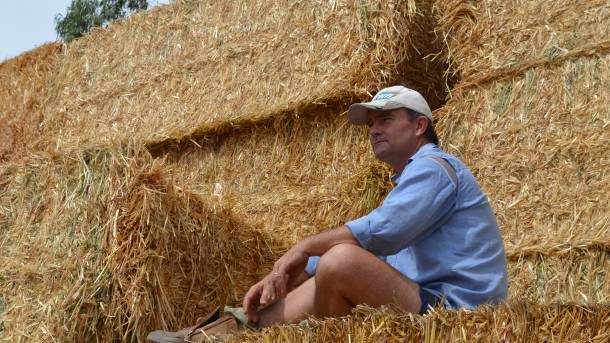
RIVERINA producers are on the cusp of what could be a record hay-making season in terms of volume.
Subscribe now for unlimited access.
$0/
(min cost $0)
or signup to continue reading
A week of sunshine – following the wettest winter and spring on record – has allowed producers to get onto paddocks and start cutting oaten and lucerne hay.
And while the signals are not necessarily rosy in terms of price the Australian Fodder Industry Association (AFIA) is anticipating some big tonnages.
AFIA chief executive officer John McKew said the current price for oaten hay was around $180 to $240 a tonne on the domestic market.
But he confirmed the season was somewhat of an “unknown quantity” simply because it was still so wet.
“We do have some concerns about what the quality will be like,” he said. For those producers who do make top quality fodder destined for the export market all previous tonnage milestones were expected to topple this financial year.
AFIA has projected Australian fodder exports – predominantly oaten hay – to reach one million metric tonnes in 2016/17.
Meanwhile, the fodder projections marry well with data contained in the latest NSW Department of Primary Industry’s seasonal conditions report.
DPI seasonal conditions coordinator Ian McGowen said during September rainfall was above average across 87 per cent of NSW. “September was the wettest on record for NSW. Most of inland NSW received extremely high rainfall of more than 200-400 per cent of the average,” Mr McGowen said.
“The far west and areas of central west, Riverina and the north west received rainfall of more than 400 per cent of the average,” he said.
“During September, most of NSW received 50-200mm with much of inland NSW receiving 100-200mm and some areas as high as 200-300mm or more.
“Pasture growth continued to improve across most of the state, although waterlogging and inundation restricted or slowed pasture growth in some areas.” Mr McGowen said the conditions resulted in topsoil moisture remaining high across areas of the Riverina. .

